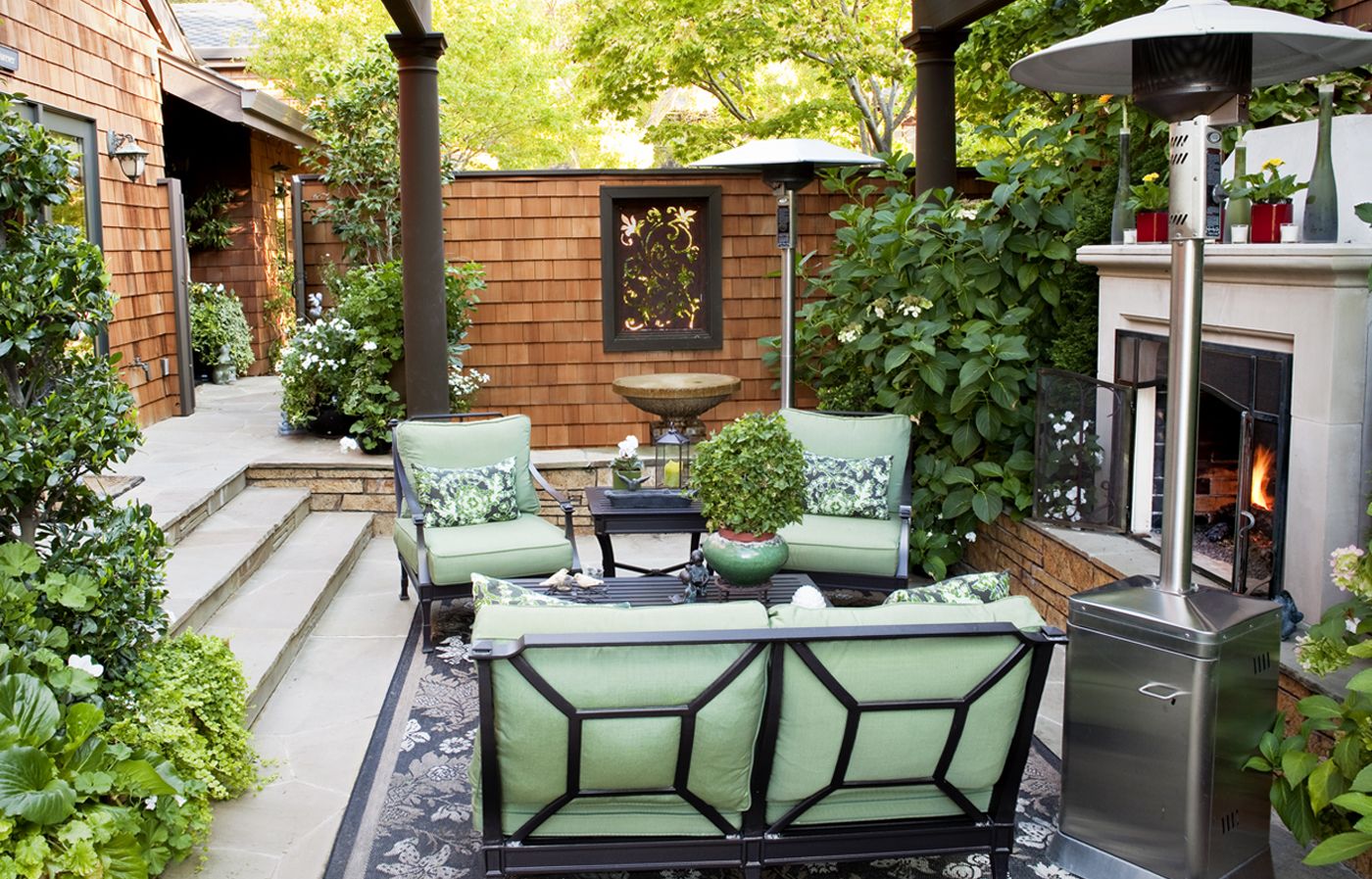A pleasant patio can transform your backyard into a relaxing oasis, inviting you to unwind and enjoy the outdoors. Look for ways to define the space using natural elements. Let a fence, hedge, or facade serve as a wall—with a pergola, tree canopy, or wide umbrella as a roof. Then, furnish your outdoor room with comfortable seating, a dining area for al fresco meals, and perhaps a fire pit for cool evenings.
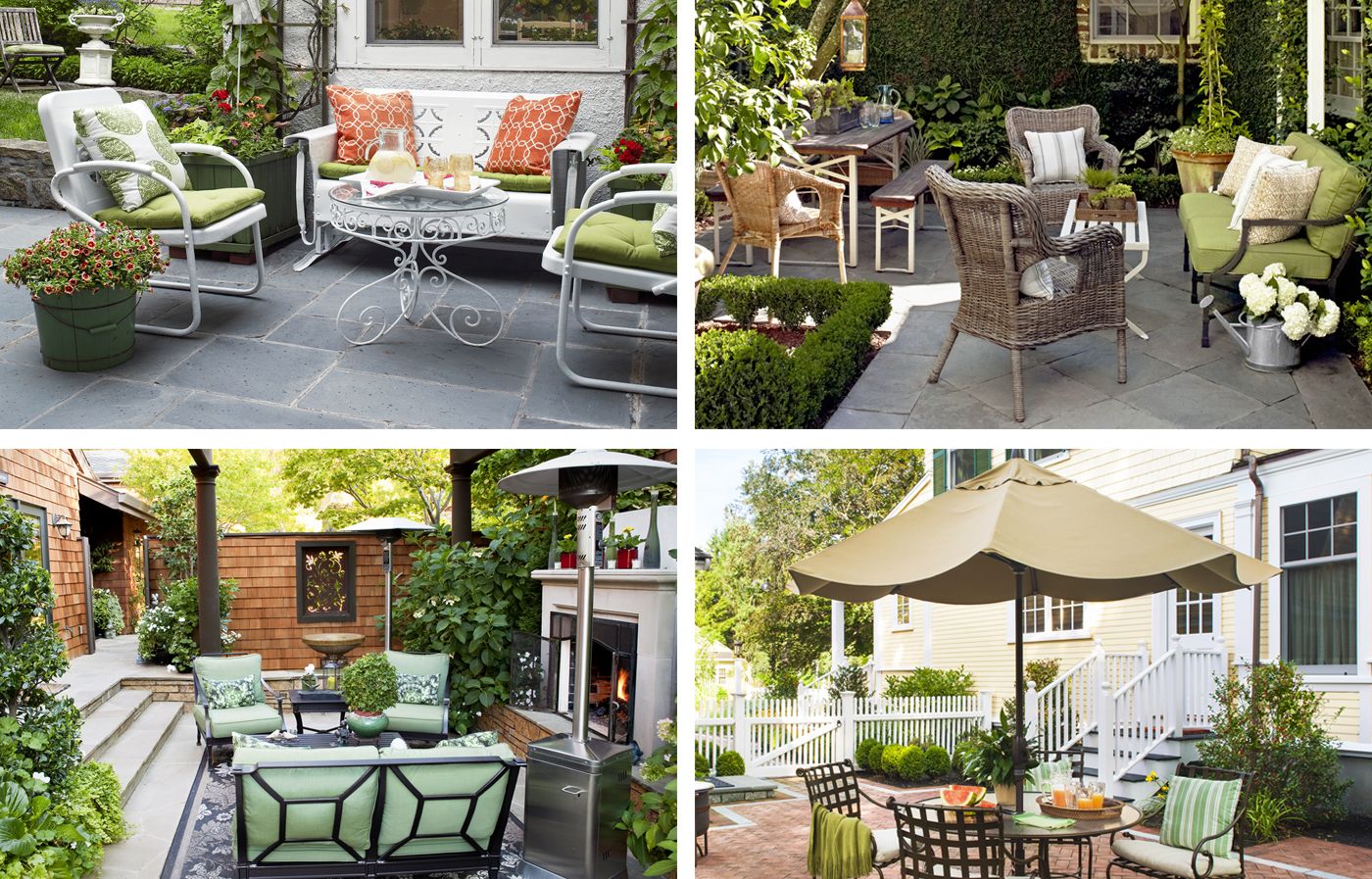
Whether you have a small balcony or a sprawling backyard, these design ideas will help you make the most of your patio. From cozy seating arrangements to eye-catching decor, we’ll explore ways to create an outdoor space that feels both open and intimate.
1. Play Off the Architecture

When designing your patio, take cues from your home’s existing architecture. Much like charming shutters or a brightly painted door, double-hung windows can serve as a patio focal point. At night, these windows act as light boxes and cast an ambient glow, creating a warm and inviting atmosphere.
Consider arranging your patio furniture to face these architectural features, allowing you to enjoy both the outdoor space and the beauty of your home. This alignment bridges the indoor and outdoor areas.
2. Install a Little Lattice
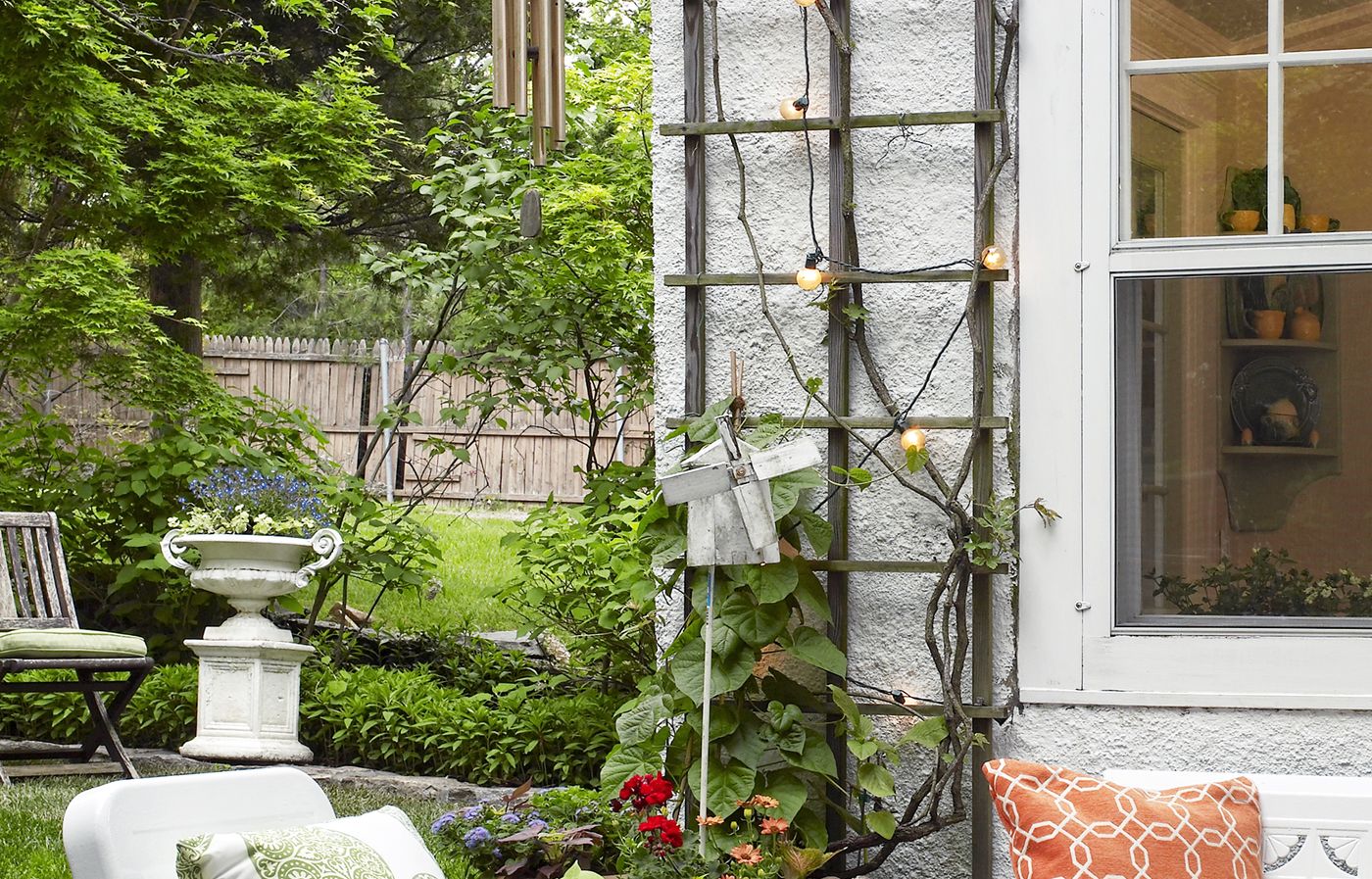
Lattice work can add depth and visual interest to your patio space. Trellises provide ladders for vines to scramble up while adding dimension and color to a white facade. Planters filled with high-contrast blooms amplify the layered look, creating a lush, garden-like atmosphere.
Incorporating lattice work can help define distinct areas within your patio, making it feel like a more structured space. It also provides privacy and shade as plants grow.
3. Make It Festive With String Lights
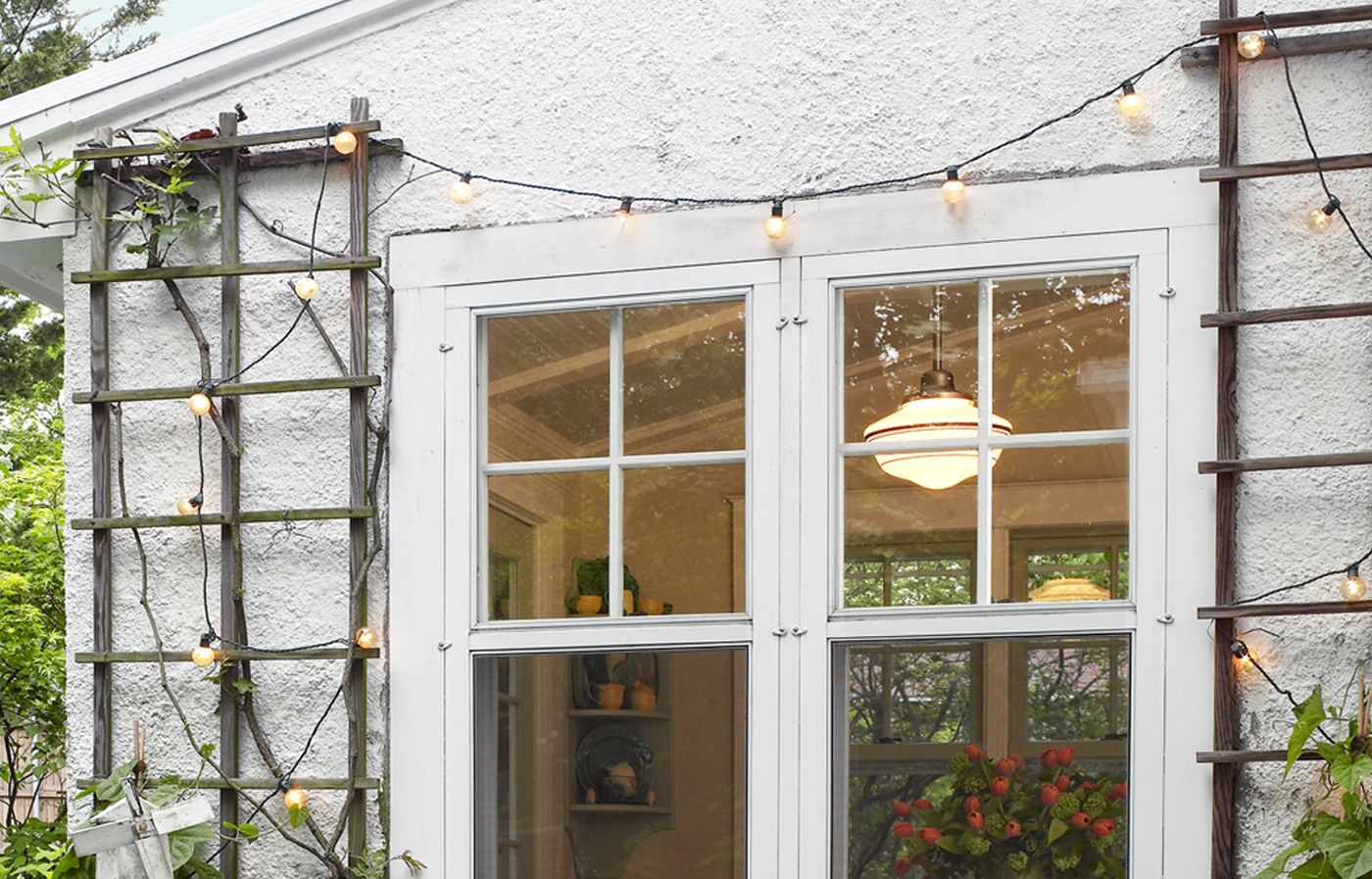
String lights are simple scene-setters that can instantly transform your patio into a magical space. These outdoor-rated globes can tie together trellises, outline pergolas, or be strung across open areas to create a canopy of light.
Remember to use weatherproof options designed for outdoor use and choose energy-efficient bulbs. For a cohesive look, choose lights that complement your patio’s style—such as Edison bulbs for a vintage feel or colorful globes for a more playful atmosphere.
4. Add Character With Vintage Furniture
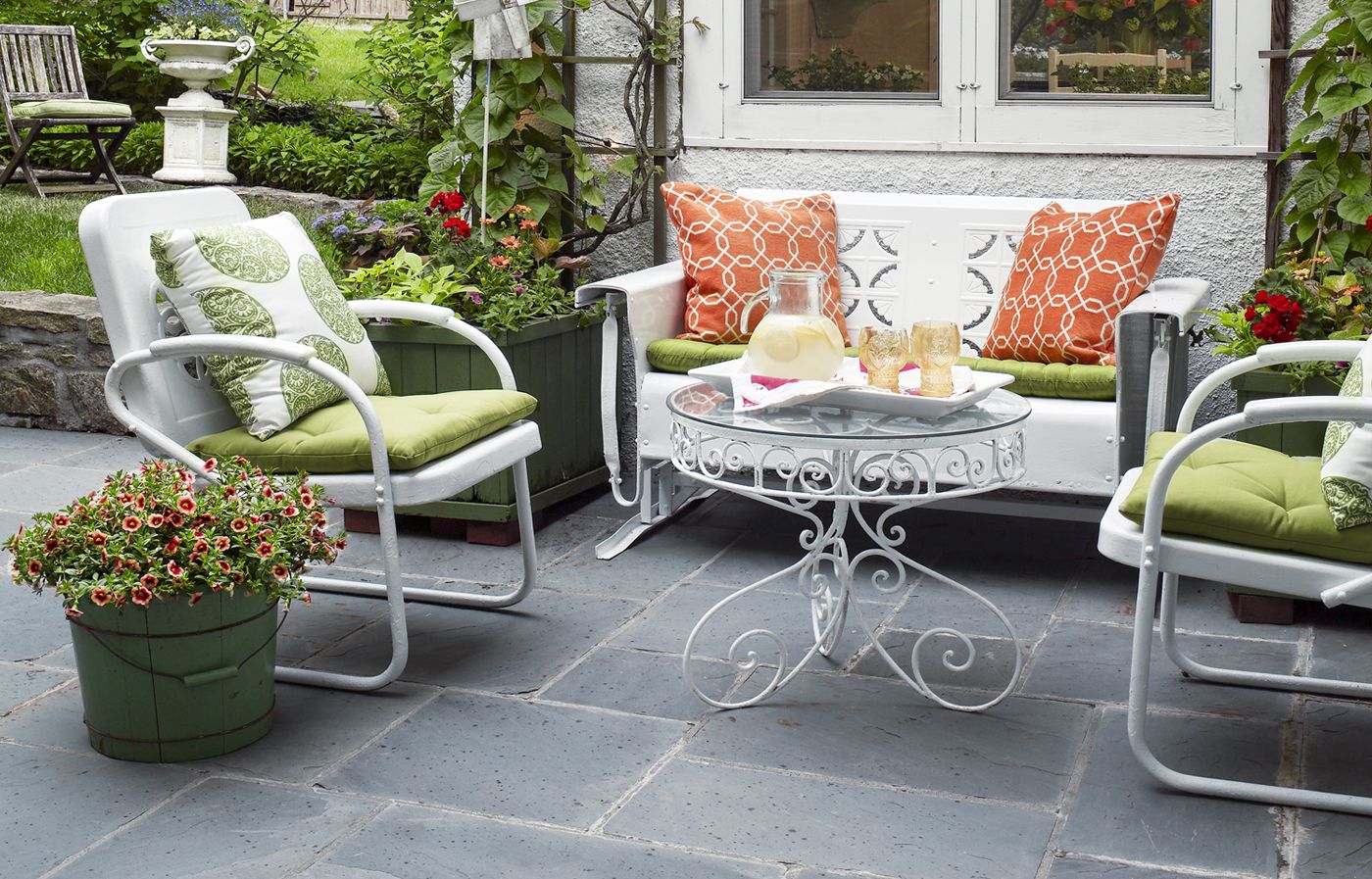
Incorporating vintage furniture into your patio design can add unique character and charm. Browse flea markets and antique shops for wooden patio furniture that just needs some light sanding and a couple of coats of paint to look refreshed.
The patina and history of vintage metal pieces can give your patio a welcoming ambiance. Refinished metal gliders, like 1940s two-seaters, can be found for $100 to $500 on online marketplaces. These pieces provide comfortable seating and add a touch of nostalgia to your outdoor space.
5. Choose Portable Pieces
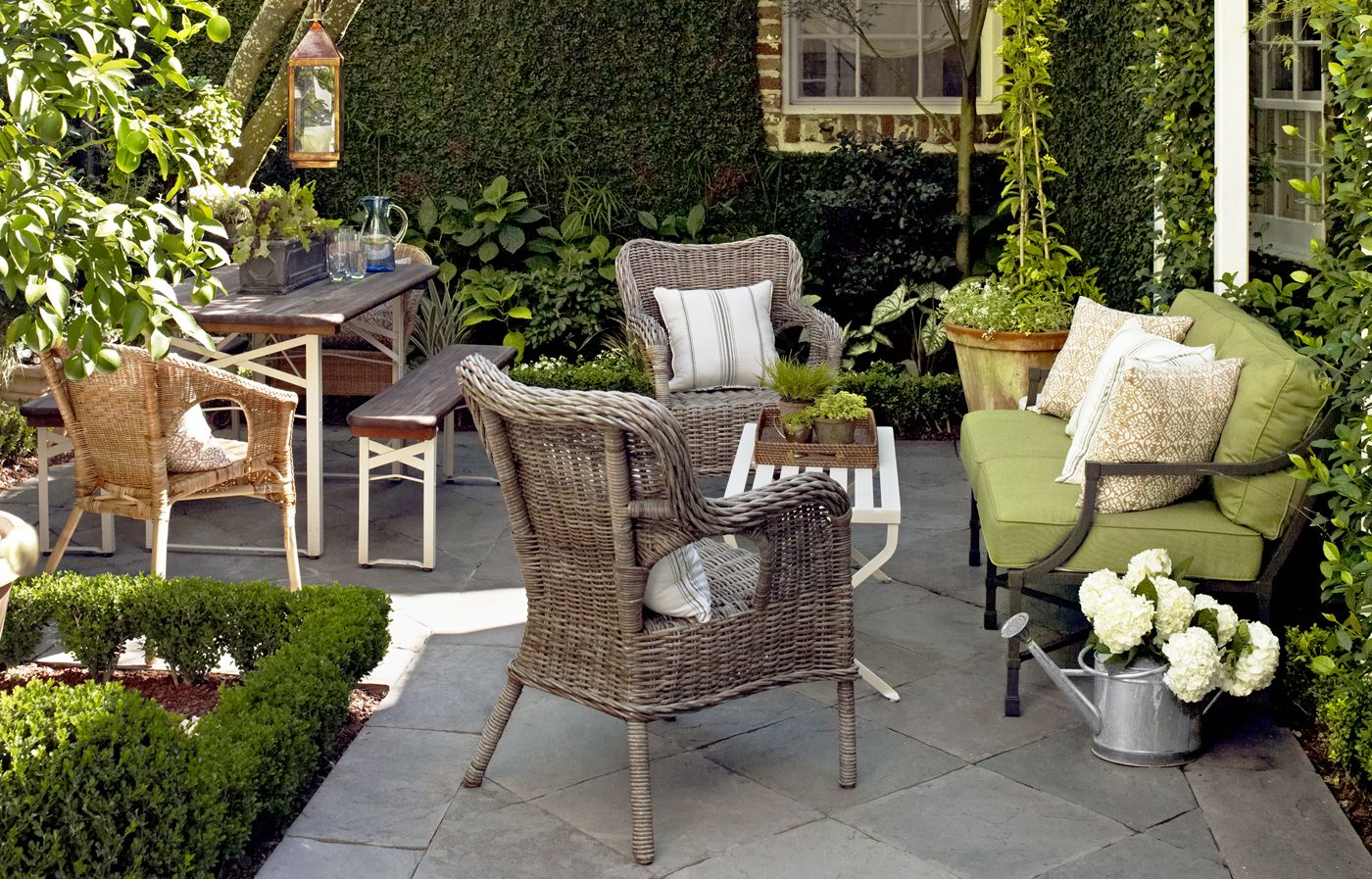
Flexibility is key when designing a patio, especially for smaller spaces or areas with multiple uses. A folding table and folding benches can transform a bare corner into a temporary dining room for small gatherings or a quiet breakfast outdoors. When not in use, these pieces can be easily stored to free up space for a yoga session or sunbathing.
Look for lightweight but weather-resistant materials like aluminum or teak, which are both durable and easy to move. Portable pieces allow you to quickly reconfigure your patio for different activities or occasions.
6. Hang a No-Wire Fixture
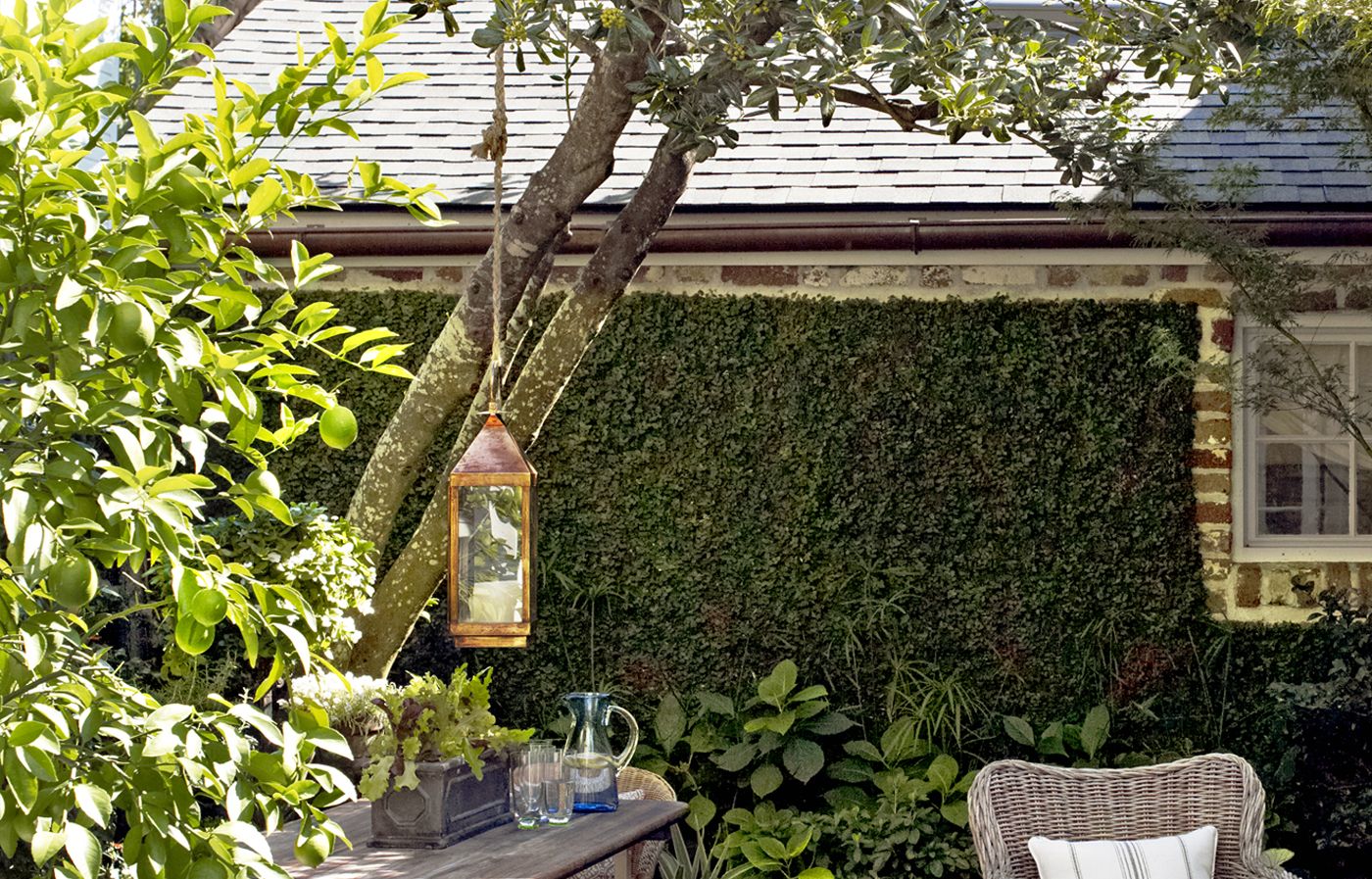
Adding ambient lighting to your patio doesn’t always require electrical work. A candle lantern tethered to a rope and lashed to a tree branch can create a warm, inviting glow. This DIY approach allows you to customize your lighting and change it seasonally.
For a more permanent solution, consider solar-powered lanterns that can be hung without the need for wiring, providing eco-friendly illumination for your evening gatherings. Battery-operated options are also useful, especially in shaded areas where solar panels might not receive enough light.
7. Cover Walls With Climbers
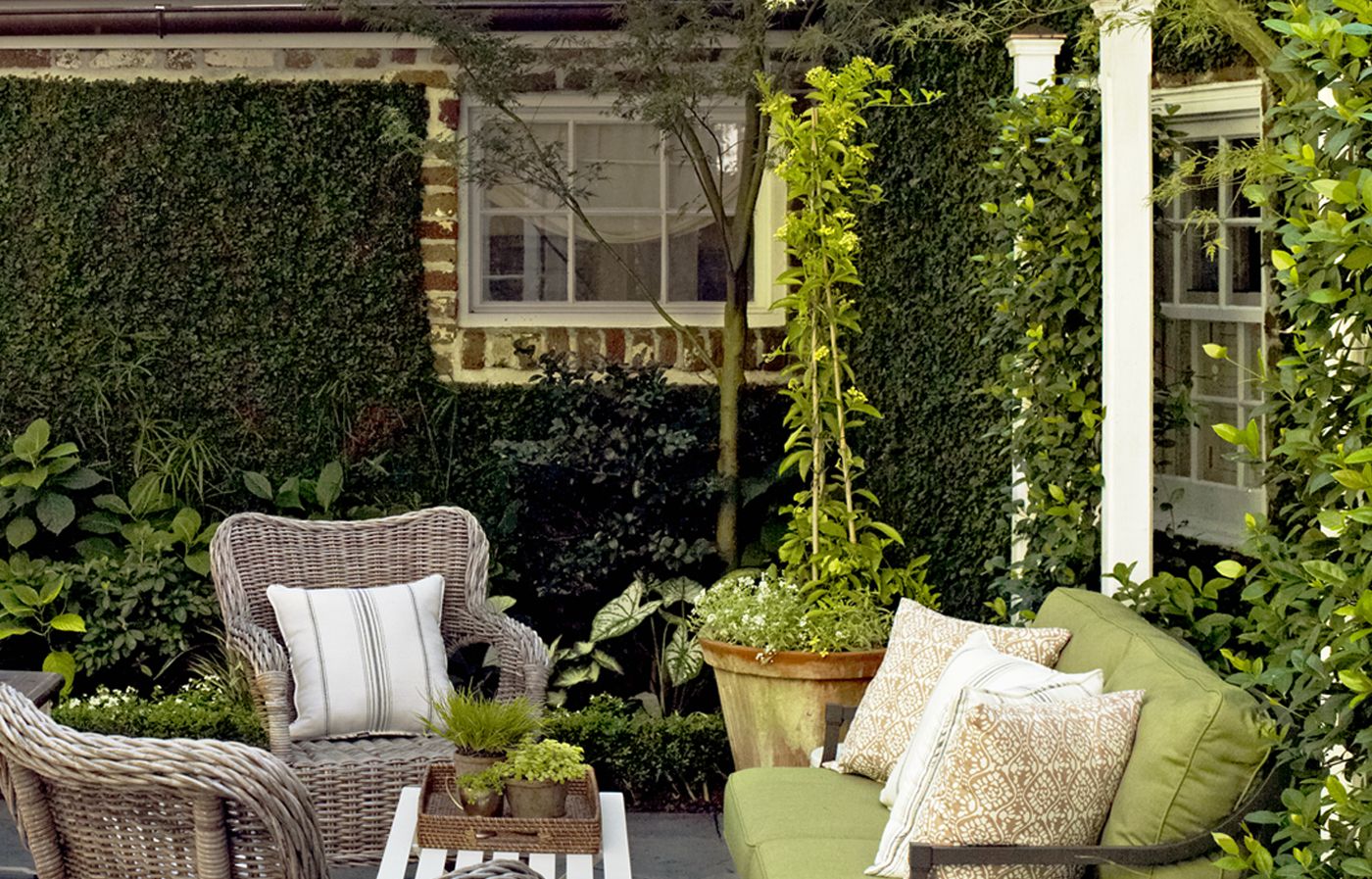
A vertical garden of evergreen vines can soften the appearance of plain siding and add a lush, natural element to your patio. Noninvasive creeping fig (Ficus pumila) is an excellent choice for masking brick or other hard surfaces. Other attractive options include clematis for its showy flowers or ivy for its classic look.
When selecting climbing plants, consider your climate and the amount of sunlight your patio receives. The right plants can transform a stark wall into a vibrant, living backdrop for your patio.
8. Create a Tray Garden
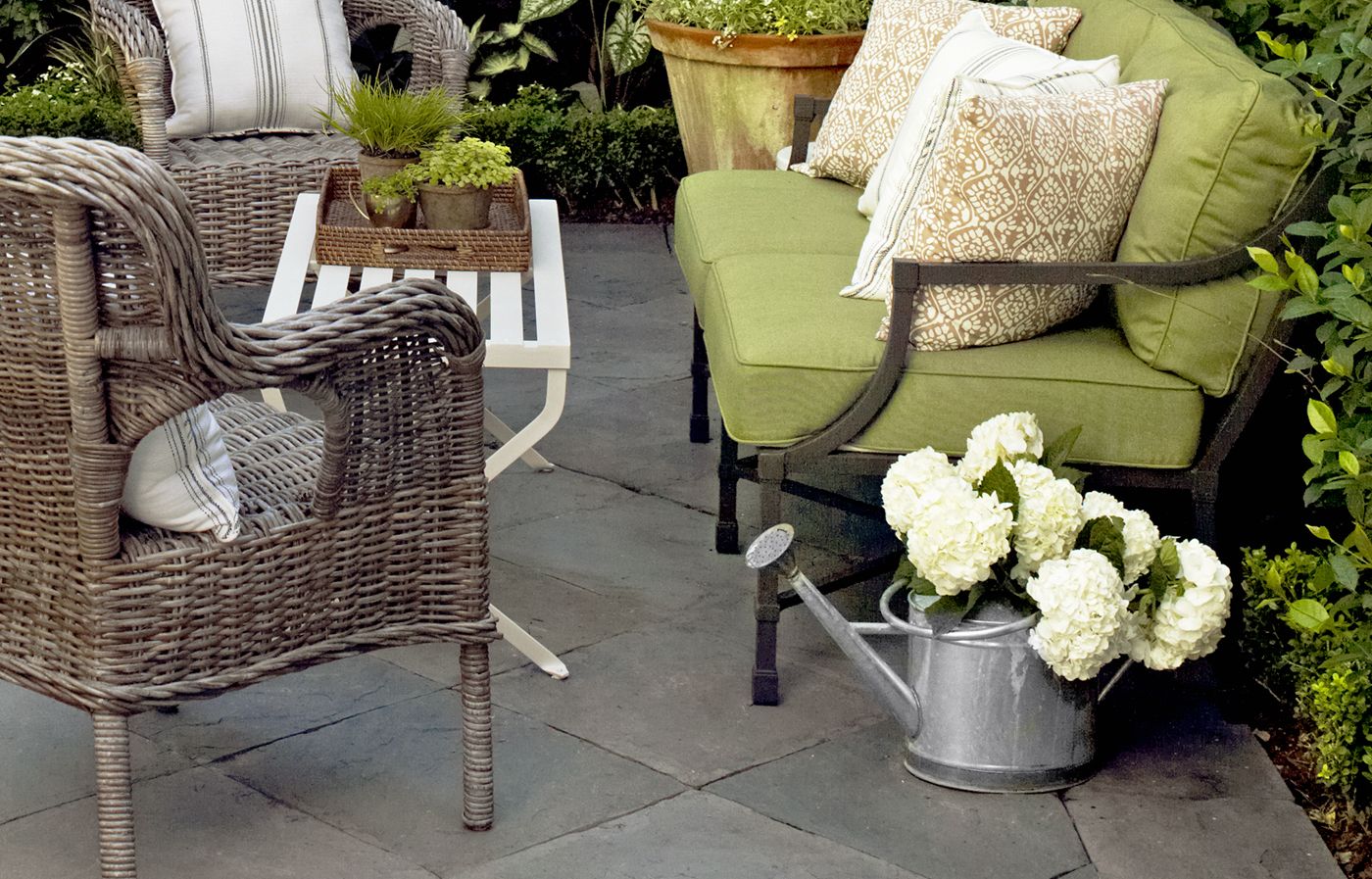
Small potted plants clustered on a tray are an all-weather decoration that can easily be moved to make room for cocktails or other activities. Creating a portable garden like this allows you to experiment with different plant combinations and rearrange your patio decor as needed.
Tray gardens are ideal for adding seasonal plants or flowers, allowing you to update your patio’s look throughout the year. Consider using herbs for a fragrant and functional mini garden or succulents for a low-maintenance option that adds texture and interest to your outdoor space.
9. Turn Up the Heat
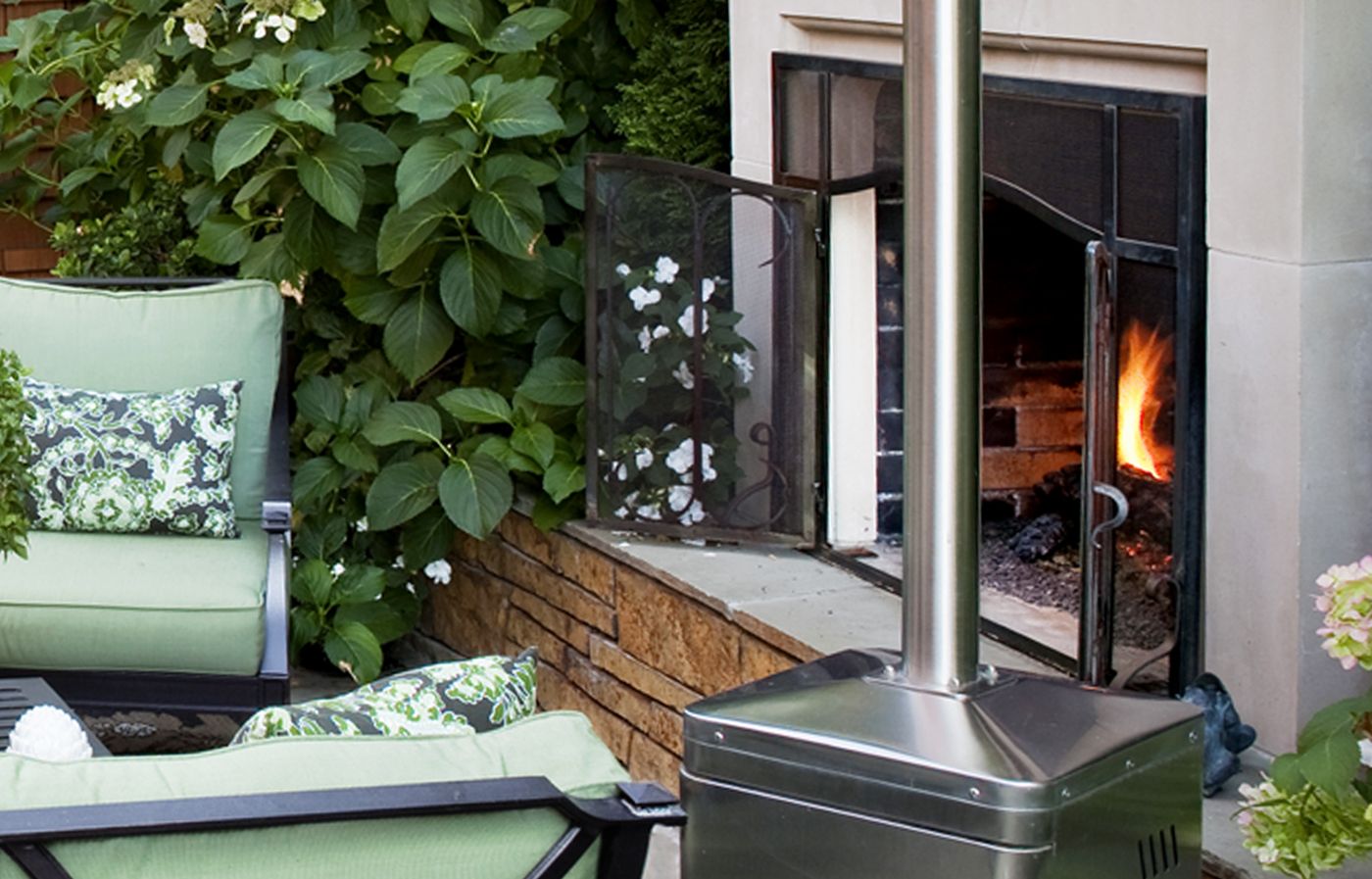
A crackling fire offers a cozy spot for congregating on chilly nights and makes your patio usable for more months of the year. A well-placed heat source can extend your outdoor season well beyond summer.
If your space and budget allow, consider a full-size wood-burning fireplace raised on a custom masonry hearth. For a more versatile option, a portable propane heater can boost the temperature and be moved as needed.
10. Put a Roof on It
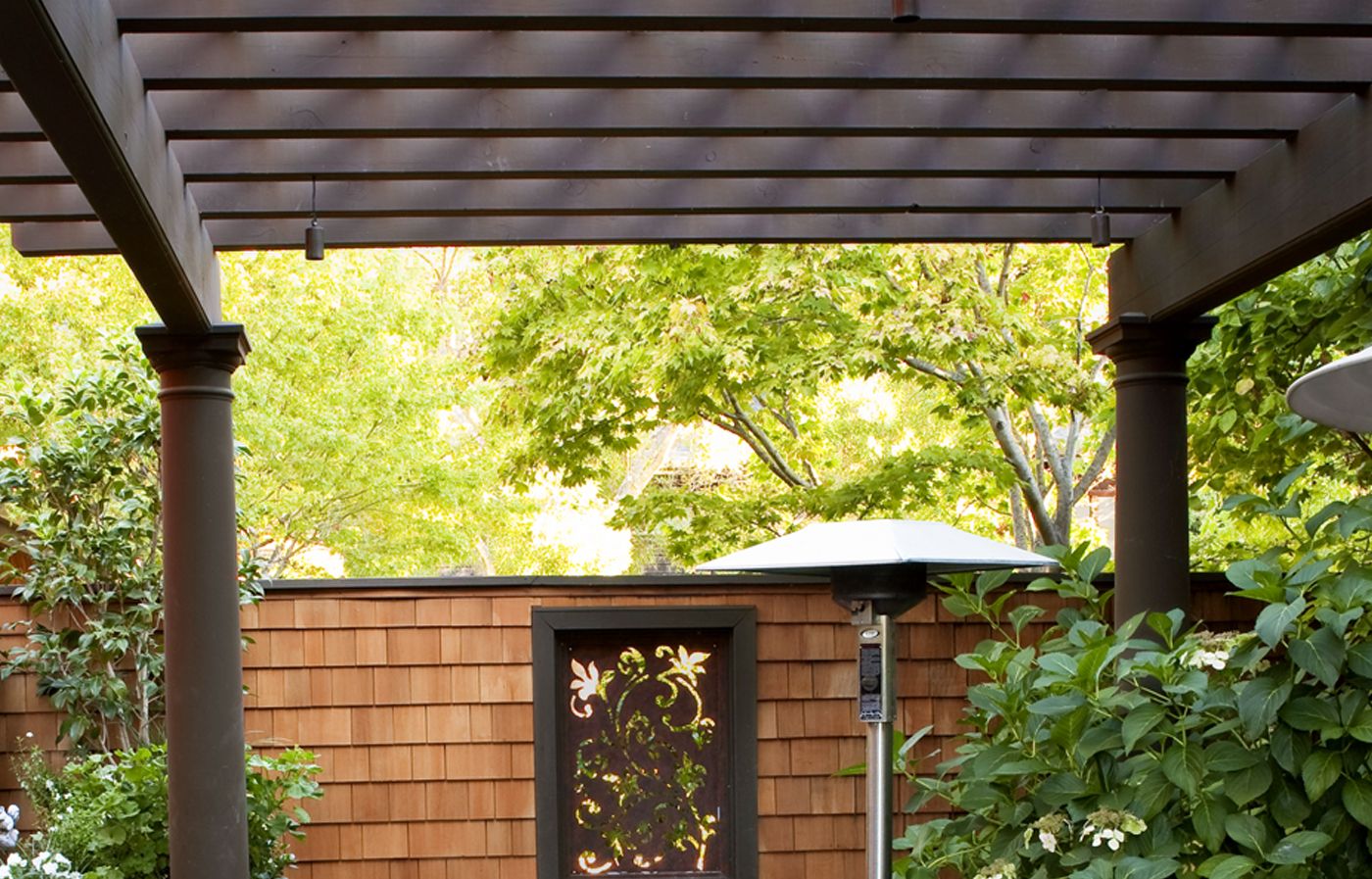
A pergola offers a bit of shade and a sense of enclosure while still letting in fresh air. This structure can define your patio space and provide support for climbing plants or hanging lights. Pergolas can also be fitted with retractable covers to provide additional shade or protection from rain.
Custom-built pergolas can be tailored to your exact specifications, while pre-made kits offer a more affordable and easier-to-install option. Whichever you choose, make sure the material complements your home’s architecture—wood for a natural look or metal for a more modern aesthetic.
11. Add Running Water
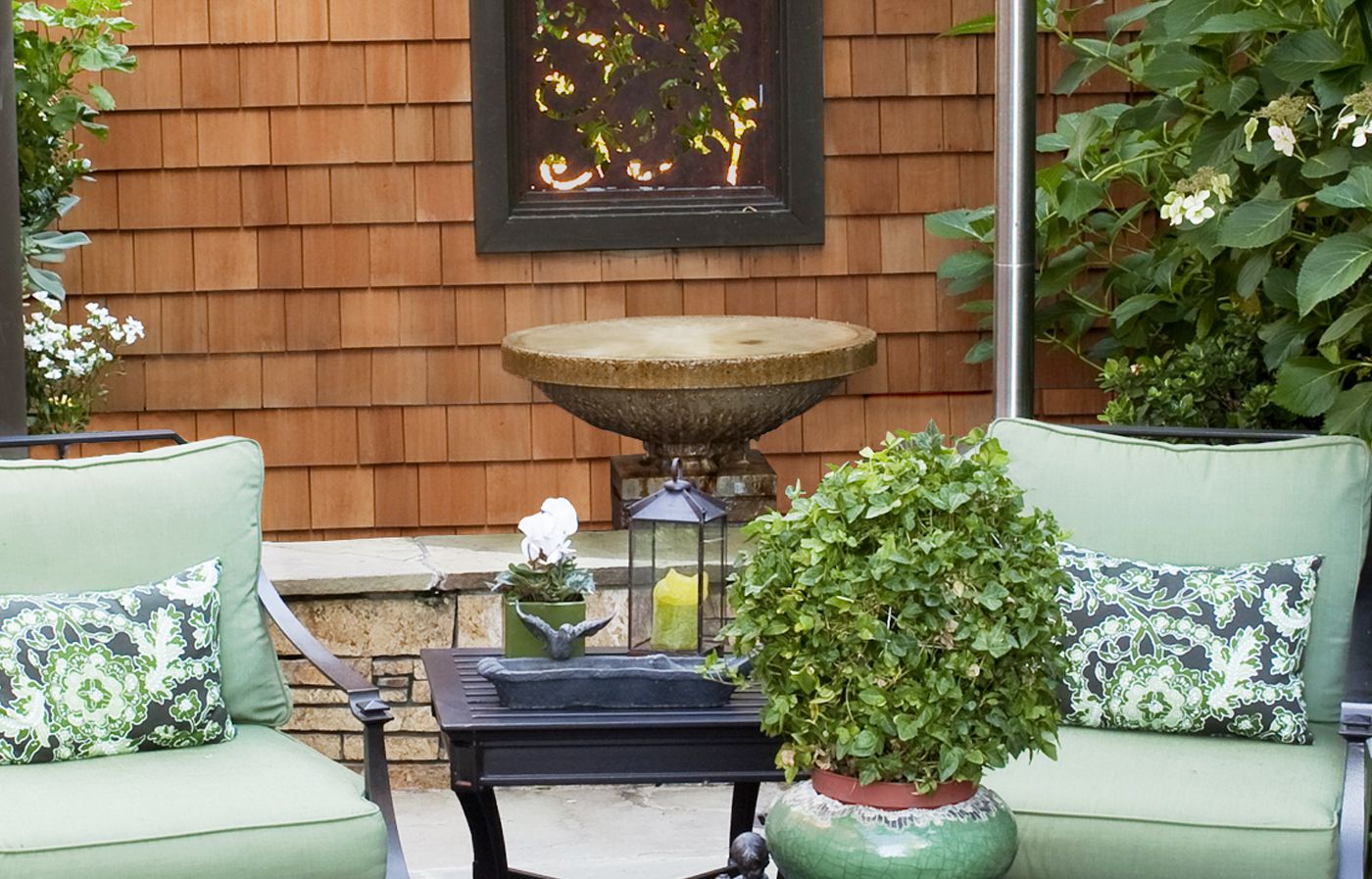
The sound of a fountain can help drown out unwanted noise from lawnmowers, air conditioners, and passing cars, bringing a sense of calm to your outdoor oasis. Water features can also attract birds and other wildlife, adding to the natural beauty of your patio.
When selecting a fountain, consider the size of your patio and the overall style of your outdoor decor. Options range from small tabletop models to larger, freestanding structures that can serve as focal points. We recommend pairing your fountain with a solid barrier, such as a shingled partition wall, to more effectively counter noise pollution.
12. Put a Pattern Underfoot
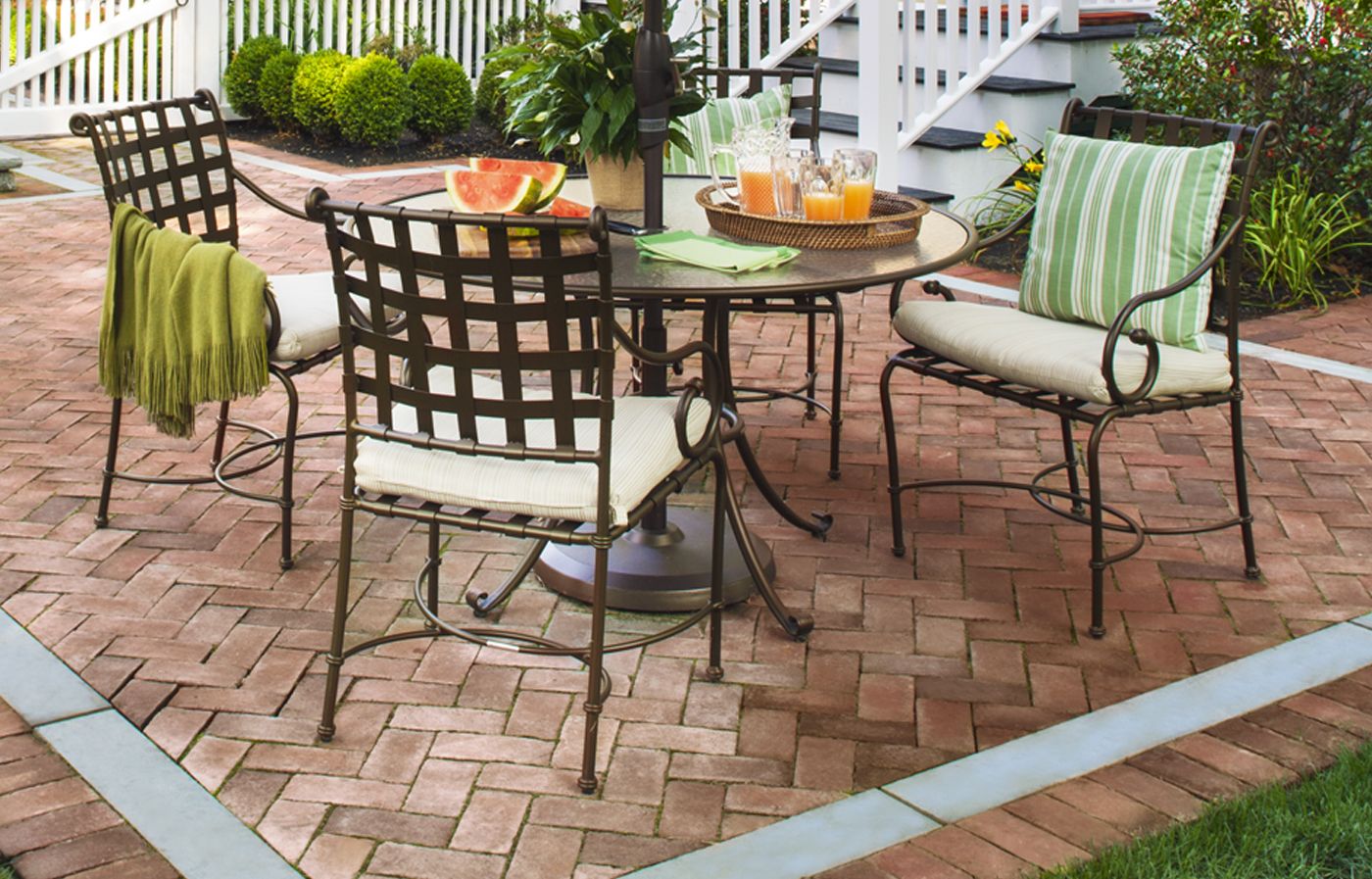
The way you lay a brick or paver floor sets the tone for your outdoor space. For instance, the bordered herringbone pattern shown here works well across a large expanse and complements a traditional house style. The type of material you choose, whether brick, stone, or concrete, will also impact the overall feel of your patio.
When choosing a brick pattern, consider the size and shape of your patio, as well as your home’s architectural style. Basketweave patterns offer a classic look, while running bond patterns can make a space appear larger. For a more modern aesthetic, consider large-format pavers in a grid pattern.
13. Make Shade
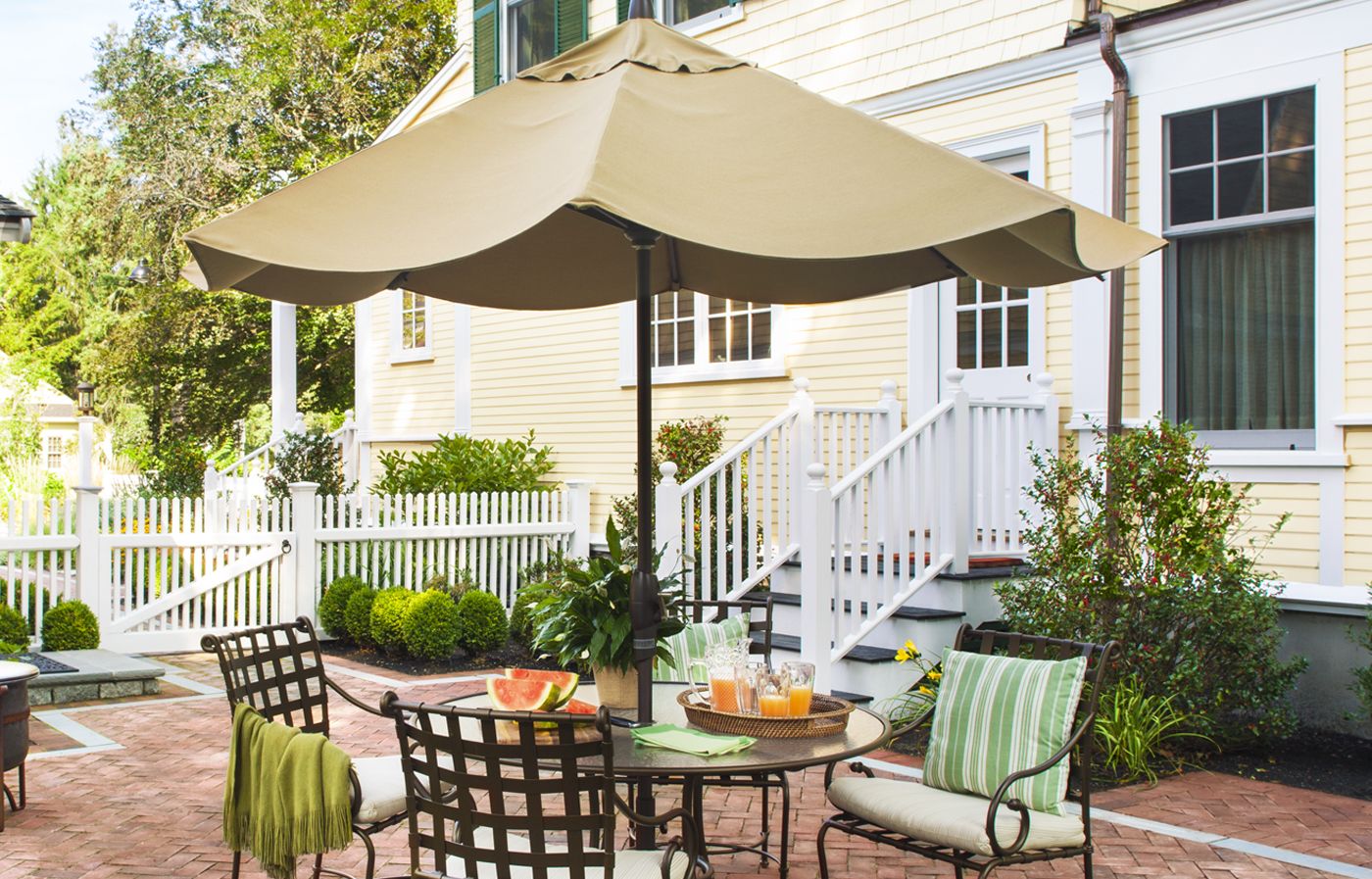
Shade is crucial for making your patio comfortable during hot, sunny days. It also helps protect both your skin and your patio furniture from UV damage.
A market umbrella is the simplest way to beat the heat on an exposed patio. To shelter four chairs, choose an umbrella 9 feet or larger that has a sturdy base to prevent tips, tough aluminum ribs to weather high winds, and a fade-resistant, UV-rated canopy. For larger areas, consider retractable awnings or sail shades that can be adjusted based on the sun’s position throughout the day.
14. Fire Up a Portable Pit
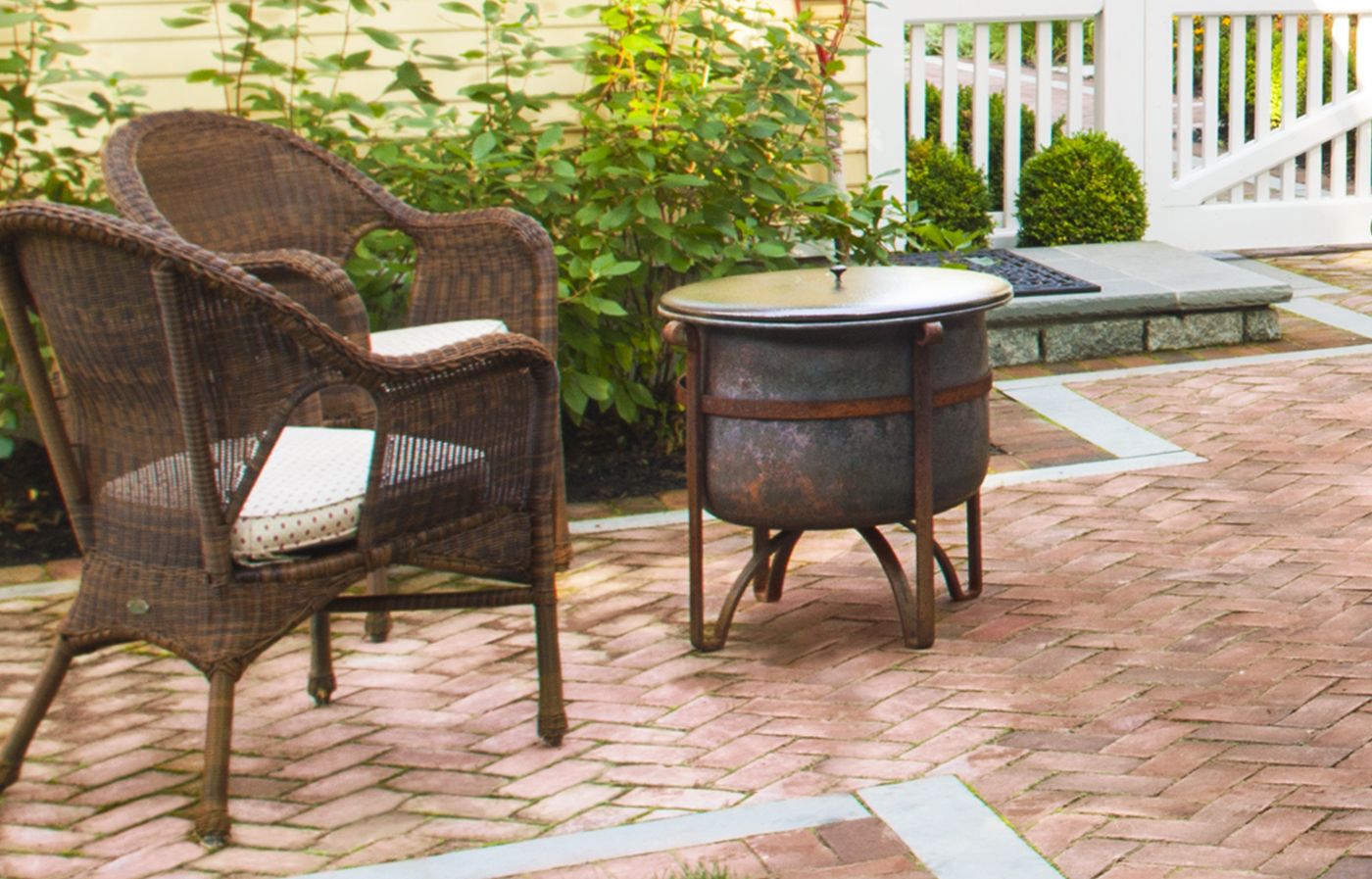
A store-bought fire bowl is an affordable alternative to a built-in fireplace, and you can move it around to suit different patio layouts or occasions. Vessel-style pits with lids can double as tables when not in use, making them versatile additions to your outdoor space. They are also perfect for roasting marshmallows or creating a focal point for evening conversations.
When selecting a portable fire pit, consider factors such as fuel type (wood-burning or propane), size, and safety features. Always follow manufacturer guidelines and local regulations regarding outdoor fires.
Our Conclusion
Creating a pleasant patio is about blending functionality with personal style. By incorporating elements like versatile furniture, ambient lighting, and natural features, you can transform your outdoor space into a true extension of your home. Remember, the key to a successful patio design is creating a space that reflects your lifestyle and provides comfort throughout the seasons. Personalize your patio to suit your needs, and it will become a cherished outdoor retreat for relaxation and entertainment.
